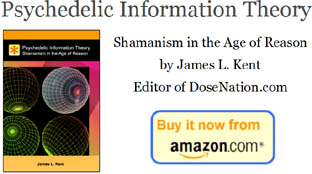How your alphabet shapes your brain
The Wall Street Journal has a great article which continues the thread of how language shapes thought. This article focuses on the differences between sequential line-based alphabets and symbolic pictorial alphabets, and how those brains differ when doing the same tasks. Confirming what we should all already know, it turns out these different types of languages use entirely different parts of the brain and entirely different methods to parse and process, and thus think in entirely different ways.
Using two brain-imaging techniques, they identified striking differences in neural anatomy and brain activity between children able to read and write Chinese easily and classmates struggling to keep pace. Both were at odds with patterns of brain activity among readers of the English alphabet.
Even when readers in both languages looked at the same written characters, the brain activity was different, other researchers found. Arabic numerals of standard arithmetic -- used by readers of Chinese and English alike -- activate different brain regions depending on which of the two languages people had first learned to read, researchers at the Chinese Academy of Sciences and China's Dalian University of Technology reported in 2006.
"In this sense, we may regard dyslexia in Chinese and English as two different brain disorders," Dr. Tan said, "because completely different brain regions are disrupted. It's very likely that a person who is dyslexic in Chinese would not be dyslexic in English."
In a generalized sense, people with Western romance-language brains parse linguistic meaning through a sequential hierarchical rule-based context, eastern cultures tend to do the same thing through logical or emotional juxtapositions of meanings created by particular symbolic groupings. In the West the ultimate point of meaning rests at the top. In the east the ultimate point is in the Center. So it goes.
|

Recently @ DoseNation
|
|





















And it's very annotatable....you can put in these pauses....for different types of emphasis too, and make use of brackets (and brackets within brackets).
Chinese is also based on the pictograms being actual drawings of what the meaning of the phrase or word they represent is, and differences in intonation as conveying meaning are able to be represented in that language, whereas in English we only really do similar when raising voice at the end of a sentence = a question. And that isn't a standard really either. Anyway, the main point to take away from that is: pictographic languages are indeed very different from the type of alphabetics like English uses, and learning and using them makes you think differently.
Pictographs are a bit like looking at a a painting - you're interpreting a whole phrase or even as much as a sentence or concept, from one character. They also alter depending on the context they show up in.
And then in spoken languages again there are vast differences in how they are structured, whether there is a written component to them or not. Look at Mayan: if you speak Mayan backwards phonetically it actually means the opposite meaning of it said forwards. And that's also a pictographic language too. Ancient Egyptian: has at least three different ways of reading the pictographs. The Torah is a bit like that too - there's four at least different ways to read it, the Bible versions most people read (in the Bible) is only one of those.
The comments posted here do not reflect the views of the owners of this site.